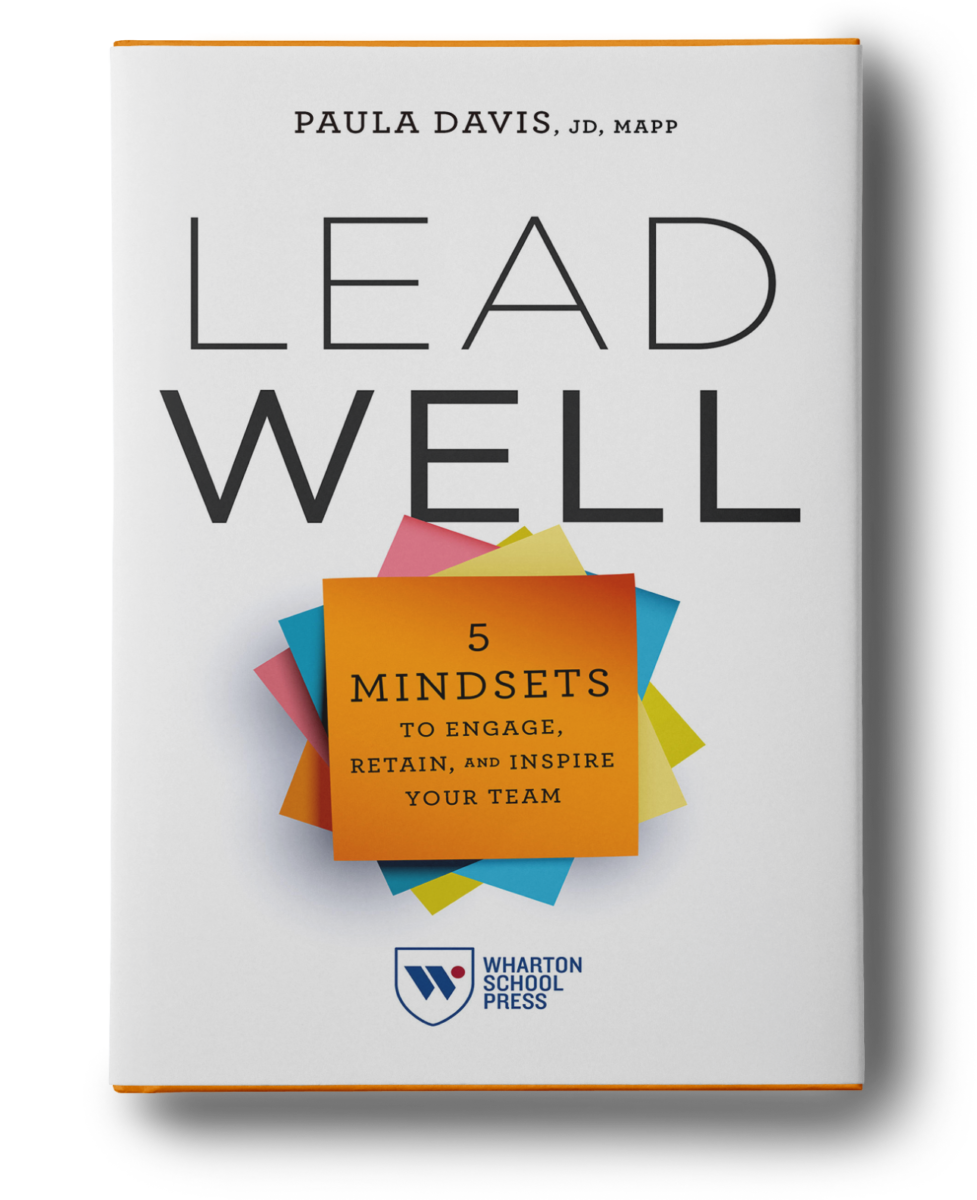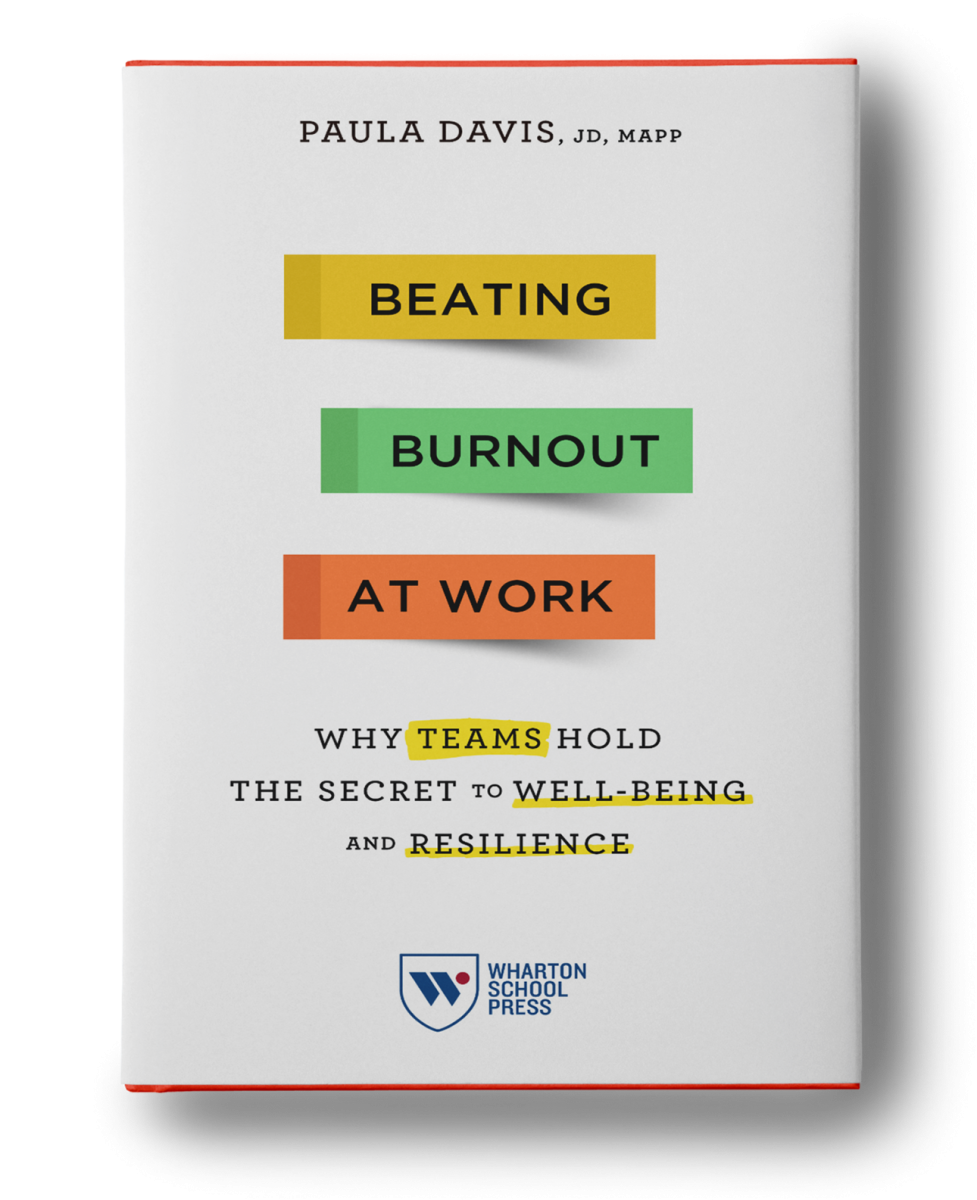I was inspired to write this blog post when my friend sent me an article from KevinMD.com called “Confessions of a Burnt-Out Physician.” Having experienced burnout myself, I’m keenly aware of the toll it takes on people who are trying to do good work in the world.
Her story has stayed with me as I’ve gone on to work with other clients and companies that are having burnout concerns. Most recently, my cousin, who is a critical care nurse, told me that she didn’t have time to go to the bathroom in her entire 12-hour shift. My shock quickly faded once I realized that I had done the same thing as a busy attorney. There were many days when I didn’t eat, ate late in the day, or ignored my own personal needs in favor of billing more hours.
The way we work is broken when scores of talented people can’t attend to their basic human needs. Until larger systemic issues are fixed, these and other stories continue to push me to create stress-relief strategies that can actually be incorporated in one’s super-hectic day.
Here are 10 such strategies to try when you have 5 minutes or less:
- Change your passwords. I recently read about a guy who used this specific password technique to process his anger after his divorce. He changed his password to Forgive@h3r, and it worked. His next password was Quit@smoking4ever, and it helped him quit smoking. Think about how many times you enter a password during your day. Make it something that is going to help you create the environment you want.
- Give someone a hug. Hugs are so important that they now have their own day—January 21 was actually Give Someone a Hug Day. Hugs are good stress relievers. Hugging someone causes you to release oxytocin, a hormone that promotes pro-social behaviors that can contribute to relaxation, trust, and compassion. If you feel weird about hugging your colleagues at work, save those hugs for friends and family.
- Pet an animal. More and more companies and schools are recognizing the powerful impact that petting animals has on reducing stress. As I burned out, my panic attacks increased, and I stopped exercising because a hard-beating heart caused my anxiety-flooded brain to trigger panic. To help, I spent lots of time with our golden retriever, Sadie, and I firmly believe she saved me from a complete breakdown.
- Try 4-7-8 breathing. Many busy professionals tell me they don’t have enough time to develop a full-blown meditation practice. This is the closest thing to meditation that I’ve been able to do, and it’s helped me relax in numerous situations. If you’ve been feeling less focused, more scattered, or having more knee-jerk reactions to stress-producing events, try this technique: Sit in your chair or on the floor with your back straight. Breathe in for a count of 4, hold your breath for a count of 7, then exhale for a count of 8. Repeat this for five minutes. The first few times I tried it, I was all over the place, but now I’ve got the hang of it.
- Savor something. Savoring involves mindfully engaging in thoughts or behaviors that heighten the effect of positive events and positive emotions. There are three types of savoring: Anticipatory savoring (looking forward to a positive event); Savoring the moment (intensifying and prolonging the enjoyment of a current experience); and Reminiscing (reviewing a past event to rekindle positive feelings). Did you have a win at work? Think about that and share it! Are you looking forward to dinner out with your significant other tonight? Take a few minutes and think about the delicious smells in the restaurant and what you will order.
- Smile. I can’t tell you how many times I go to the store, the doctor’s office, a restaurant, or other public place and the people I interact with look so cranky. Emotions are contagious. You may be pissed off, hung over, unhappy at work, or going through a tough time, but simply smiling may not only make you feel better, it can signal others that you want to connect.
- Do a brain dump. Counterproductive thoughts and emotions build up during the day. The anger you feel toward a friend, anxiety about missing an important work deadline, or frustration from being turned down for a promotion all need to be processed. Your worst-case-scenario thinking won’t get better until you get it all out of your head. It’s amazing how different a problem looks when it’s on paper.
- “If-Then” a goal. Research has shown that if you add “if…then” statements to your goals, the likelihood of achieving that goal increases. This is how I use “if…then” statements with one of my health goals, which is exercising most days of the week: “If it’s Monday morning, then I’m going to the gym.” That becomes a habit, which puts my brain on autopilot. If it’s cold outside, I’m tired, or just don’t feel like going, it doesn’t matter because it’s Monday morning, and Monday morning = the gym.
- Create your PERMA-H score. Dr. Martin Seligman’s theory of flourishing involves five elements known by the acronym PERMA. PERMA stands for Positive emotions, Engagement, Relationships, Meaning, and Achievement. I’ve added another factor, Health. Grab a piece of paper, and write the following: P____ E_____ R_____ M_____ A______ H______. Your PERMA-H score is you at your flourishing best—when you’re in the zone, kicking butt. What does that look like for you? If you have 30 points to divide among each PERMA-H element, what does your optimal score look like? (Each bucket must have a number greater than 0.) Mine looks like this: P – 2; E – 4; R – 5; M – 5; A – 8; H – 6. TOTAL: 30. When I’m having an off-day or am overly stressed out, I pull out my PERMA-H score and usually find that one of these areas isn’t getting enough attention.
- Play a mental game. Our brains are hardwired to notice, seek out, and remember negative events and information. It’s called the negativity bias. If you’re having a stressful day, odds are that your brain will be replaying those stressful events long after the stress has passed. If you need to temporarily “change the channel” of your thinking so that you can focus and concentrate on the task at hand, play a mental game. Mental games are fun, easy activities to help you lessen distraction. You can count backwards by 7 starting at 1,000, recite upbeat song lyrics, or try my favorite one: Create a sentence where every word must begin with the same letter, starting with “A.” For example, “All aardvarks are awesome.” Then go onto “B.” “Big bananas buy boats.” I use this when I can’t sleep at night.
Pick the two or three strategies that resonate most with you and try incorporating them into your day. I’d love to hear from you: What are some stress-relief strategies you use when you have 5 minutes or less?
Want to know more? Download my free “Is It Stress or Is It Burnout” strategy guide here. You can also learn about my speaking and training programs here.
References
Halvorson, H.G. (2011). Succeed: How We Can Reach Our Goals. New York: Penguin Group.
Seligman, M.E.P. (2011). Flourish: A Visionary New Understanding of Happiness and Well-Being. New York: Free Press.
The mental games activity was part of the training curriculum developed by the University of Pennsylvania as part of its resilience training for soldiers.
The PERMA equation concept originated with my colleague, Gretchen Pisano at www.soundingboardink.com.
The information on savoring is from a lecture at the University of Pennsylvania held on March 27, 2010 as part of my master’s degree in applied positive psychology. See also Bryant, F.B., and Veroff, J. (2006). Savoring: A New Model of Positive Experience. Mahwah, NJ: Erlbaum.
[/fusion_text][/fusion_builder_column][/fusion_builder_row][fusion_builder_row][fusion_builder_column type=”1_1″ type=”1_1″ layout=”1_1″ background_position=”left top” background_color=”” border_size=”” border_color=”” border_style=”solid” border_position=”all” spacing=”yes” background_image=”” background_repeat=”no-repeat” padding_top=”” padding_right=”” padding_bottom=”” padding_left=”” margin_top=”0px” margin_bottom=”0px” class=”” id=”” animation_type=”” animation_speed=”0.3″ animation_direction=”left” hide_on_mobile=”small-visibility,medium-visibility,large-visibility” center_content=”no” last=”true” min_height=”” hover_type=”none” link=”” first=”true”][fusion_text][/fusion_text][fusion_text] [/fusion_text][/fusion_builder_column][fusion_builder_column type=”1_1″ type=”1_1″ layout=”1_1″ spacing=”” center_content=”no” link=”” target=”_self” min_height=”” hide_on_mobile=”small-visibility,medium-visibility,large-visibility” class=”” id=”” hover_type=”none” border_size=”0″ border_color=”” border_style=”solid” border_position=”all” box_shadow=”no” box_shadow_blur=”0″ box_shadow_spread=”0″ box_shadow_color=”” box_shadow_style=”” background_type=”single” gradient_start_position=”0″ gradient_end_position=”100″ gradient_type=”linear” radial_direction=”center center” linear_angle=”180″ background_color=”” background_image=”” background_image_id=”” background_position=”left top” background_repeat=”no-repeat” background_blend_mode=”none” animation_type=”” animation_direction=”left” animation_speed=”0.3″ animation_offset=”” filter_type=”regular” filter_hue=”0″ filter_saturation=”100″ filter_brightness=”100″ filter_contrast=”100″ filter_invert=”0″ filter_sepia=”0″ filter_opacity=”100″ filter_blur=”0″ filter_hue_hover=”0″ filter_saturation_hover=”100″ filter_brightness_hover=”100″ filter_contrast_hover=”100″ filter_invert_hover=”0″ filter_sepia_hover=”0″ filter_opacity_hover=”100″ filter_blur_hover=”0″ first=”true” last=”true”][fusion_text columns=”” column_min_width=”” column_spacing=”” rule_style=”default” rule_size=”” rule_color=”” animation_type=”” animation_direction=”left” animation_speed=”0.3″ animation_offset=”” hide_on_mobile=”small-visibility,medium-visibility,large-visibility” class=”” id=””] [/fusion_text][/fusion_builder_column][/fusion_builder_row][/fusion_builder_container][fusion_builder_container hundred_percent=”no” equal_height_columns=”no” menu_anchor=”” hide_on_mobile=”small-visibility,medium-visibility,large-visibility” class=”” id=”” background_color=”” background_image=”” background_position=”center center” background_repeat=”no-repeat” fade=”no” background_parallax=”none” parallax_speed=”0.3″ video_mp4=”” video_webm=”” video_ogv=”” video_url=”” video_aspect_ratio=”16:9″ video_loop=”yes” video_mute=”yes” overlay_color=”” video_preview_image=”” border_size=”” border_color=”” border_style=”solid” padding_top=”” padding_bottom=”” padding_left=”” padding_right=””][/fusion_builder_container]






